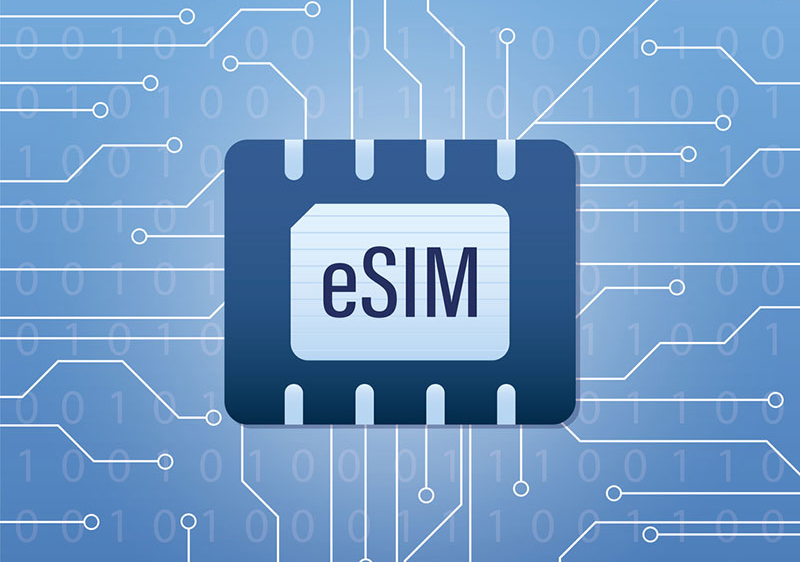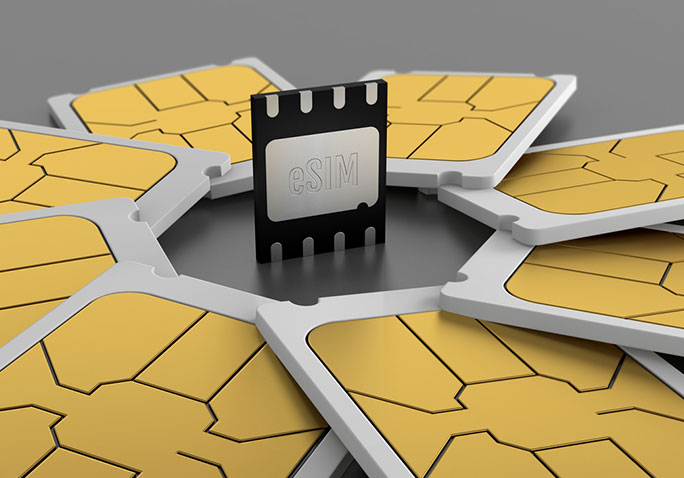Simplified Manufacturing
With our embedded connectivity, you can load the module without error-prone manual work. Ship the device anywhere for instant connectivity, regardless of carrier.
Empowering NExT profiles for Tier 1 mobile network operators (MNOs) worldwide.


Embedded connectivity comprises a module with an embedded SIM (eSIM). It removes the need for a SIM tray and enables you to build smaller devices. This IoT SIM technology empowers you with remote device provisioning and minimizes truck rolls.

Based on industry standards for integrated IoT SIMs (iSIMs and eSIMs), embedded connectivity provides greater flexibility than standard SIMs. You can streamline operations and reduce costs from human errors and manual processes. The small footprint enables you to lower the total cost of ownership (TCO) and reduce the bill of materials (BOMs).

Over-the-air (OTA) and eUICC management tools can help you maximize your operational efficiency with the flexibility and scalability you need.
Excel in operational efficiency with OTA and eUICC-aligned management tools and resources that are simple and secure to future-proof your deployment.

Embedded connectivity enables remote provisioning to configure carrier subscriptions and update devices. Embedded connectivity also supports multiple carrier profiles that save time and money. You can program and reprogram carrier profiles within a secure, cryptographic environment as your business and deployment needs evolve.
With our embedded connectivity, you can load the module without error-prone manual work. Ship the device anywhere for instant connectivity, regardless of carrier.
Embedded connectivity’s secure remote provisioning eliminates costly and time-consuming on-site SIM technical configuration.
With remote IoT SIM provisioning, embedded connectivity removes the need for upgrading devices in the field — no truck roll required.
Why do you need versatility to meet your needs?
We offer form factor families to support all cellular technologies.
Why is reliability and availability important?
Rely on long product life cycles and a lower total cost of ownership with modules built to last. If you need a replacement, the module form factor or API will be available.
Why do you need a supplier with robust certification?
Our IoT modules are certified by more regulatory agencies and mobile operators than any other portfolio. You can leverage module variants to quickly expand into new markets and regions.
What Is ongoing support?
Our experts offer ongoing support for your IoT solution. We provide design and schematic reviews and advice on system architecture.
What is secure, reliable IoT network functionality?
Integrated cryptographic capabilities protect your IoT network from cyberattacks and safeguard the device life cycle. A built-in restricted zone and user application zone harden solution security and reach.
Read our IoT security white paper to learn more.
What is the new age of cellular LPWA IoT?
Cellular LPWA IoT solutions have made them affordable and feature-rich for multiple industries. Enterprise-grade IoT can be deployed at scale for low-data, low-power applications. You can engineer your devices to include our cellular module embedded technology for large-scale deployments.
Applications include:
What are the benefits of using an eSIM and embedded connectivity solution?
eSIMs and embedded connectivity operate best with remote SIM provisioning capabilities. Soldered or embedded SIM cards require the ability to swap connectivity profiles remotely.
Advantages of our solution include:
How do you choose the right IoT SIM for business and operational needs?
Choosing the right IoT SIM for business and operational needs involves several key factors:
What are the benefits of using an eSIM and embedded connectivity solution?
Using an eSIM and embedded connectivity solution offers several benefits for IoT deployments:
How do IoT SIM solutions help to streamline operations and reduce costs?
IoT SIM solutions help streamline operations and reduce costs by enabling centralized connectivity management across all devices. With remote activation and provisioning tools, teams can reduce manual processes and deploy devices faster.
Real-time usage tracking and automated alerts prevent overages and allow quick data plan adjustments. Features like bulk management and automated rules minimize downtime and reduce support overhead. This leads to more efficient operations and better control over connectivity expenses.
We’ve pioneered IoT products and solutions for over 30 years. Speak with our IoT connectivity experts today or request an IoT connectivity starter kit.